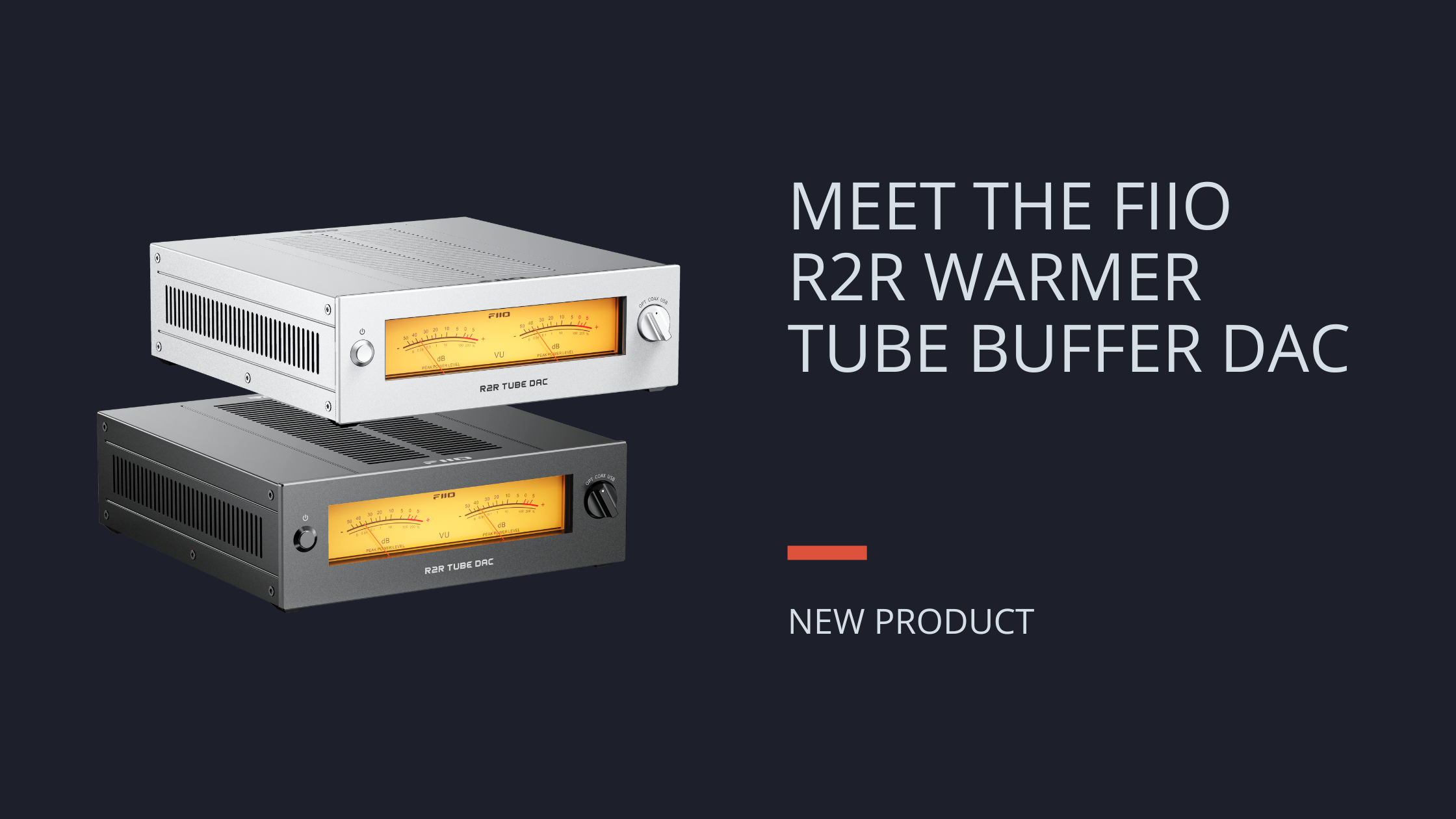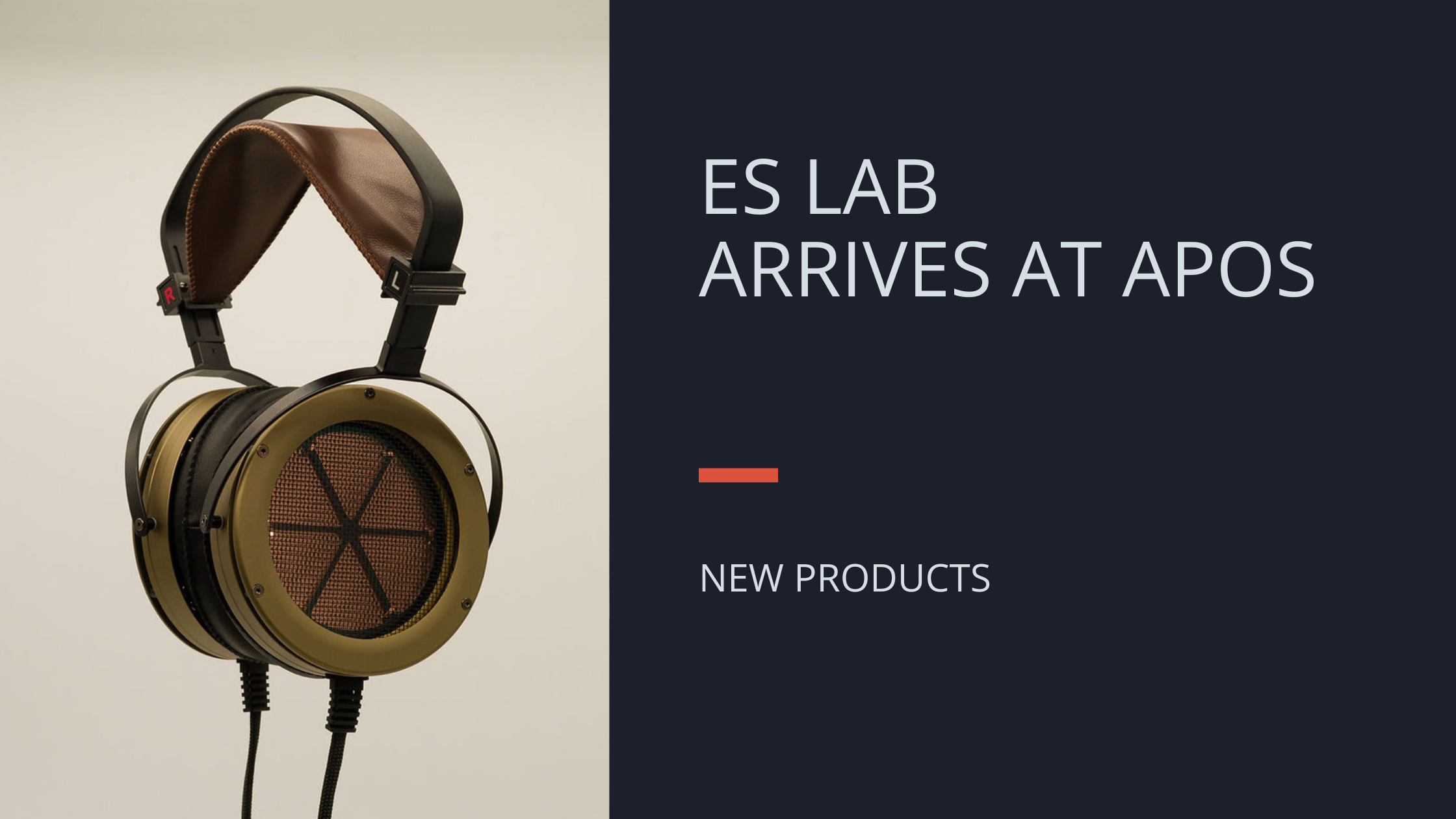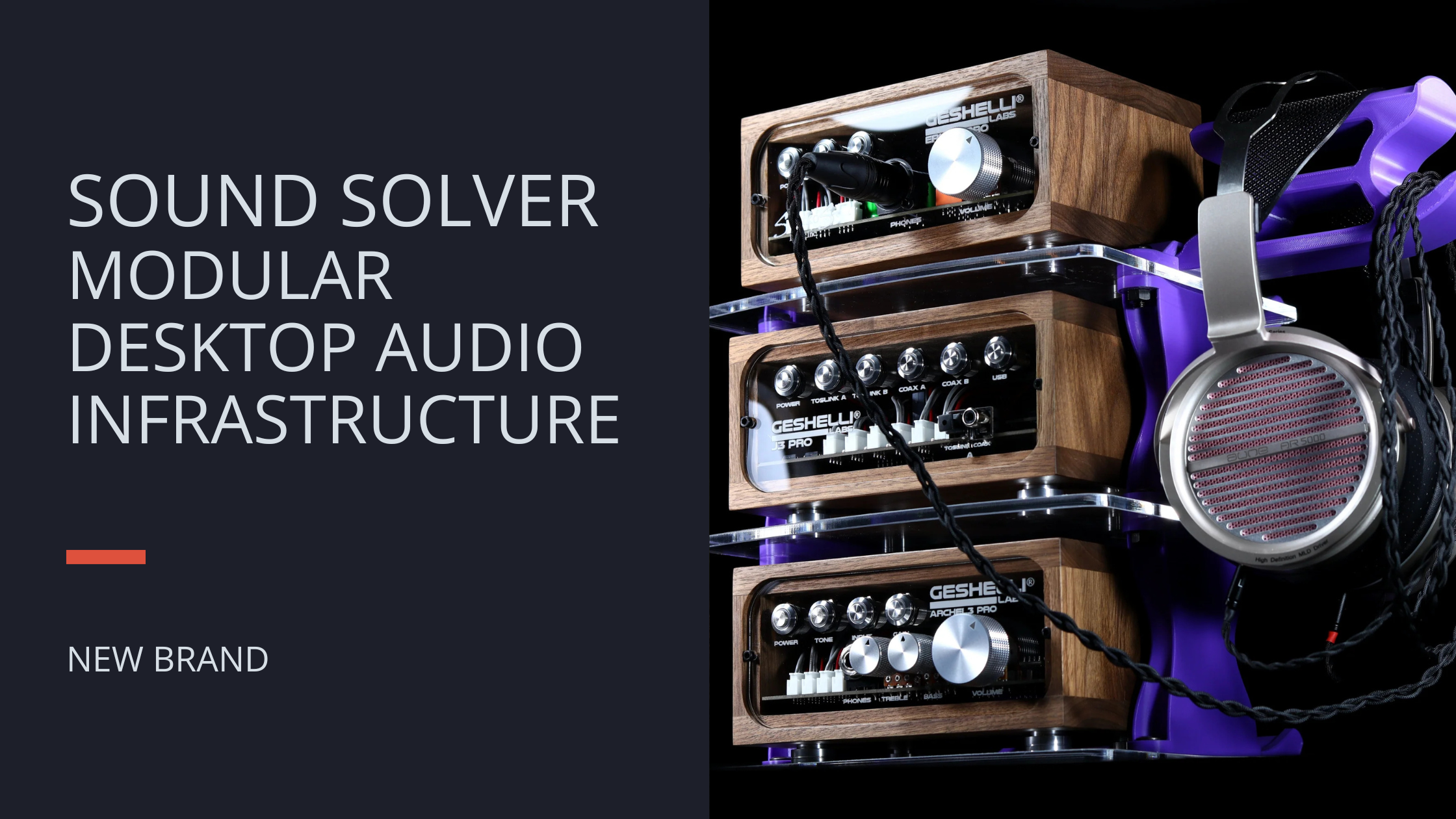
New from FiiO: WARMER R2R Tube Buffer DAC
Meet the WARMER R2R
The FIIO WARMER R2R is a desktop R2R DAC with a tube buffer designed for listeners who want digital playback with a warmer tonal character. It combines a fully-differential 24-bit resistor-array DAC with four JJ Electronic E88CC tubes, dual mechanical VU meters, and a 46W toroidal linear power supply. It accepts USB, optical, and coaxial input, supports PCM up to 384kHz/32bit and DSD256, and provides both RCA and XLR line output for use with integrated amplifiers, powered monitors, or downstream headphone amplifiers.
A discrete R2R architecture
At the center of the WARMER R2R is FIIO’s four-way fully-differential R2R design. Each channel uses 48 matched thin-film resistors—192 in total—with 0.1% tolerance and a thermal drift specification of 30ppm. An R2R DAC generates voltage using precision resistors rather than a conventional delta-sigma chip, which gives designers more control over tonal density, transient behavior, and noise characteristics. In this model, the low drift and matched tolerances help stabilize linearity across volume and temperature changes, contributing to its grounded, weighty presentation.
Tube buffering for added harmonic richness
The tube stage uses four JJ Electronic E88CC valves powered by a ±28V supply. In a buffer circuit, tubes introduce harmonic structure without performing large-scale amplification. The E88CC family is known for consistent triode balance and reliability over long operating hours—JJ rates these for approximately 10,000 hours of use. Here, the tube section adds slight euphonic coloration and softens high-frequency edges, shaping the output toward a rounder and more organic feel. Because the buffer sits after the DAC stage, the underlying linearity remains intact while the tubes influence timbre and decay.
Mechanical VU meters for analog reference
The WARMER R2R incorporates two mechanical VU meters with LED backlighting. These meters are driven by a dedicated IC that conditions the audio signal for proper ballistic response. A mechanical pointer meter gives a real-time visualization of average levels in a way digital LEDs generally don’t replicate—it moves more slowly and represents perceived loudness rather than peak amplitude. Listeners who monitor volume by eye may find this especially useful when adjusting pre-amp gain or matching levels across sources.
Clean power from a toroidal transformer
A 46W toroidal linear transformer supplies the unit. Toroidal cores are efficient and produce lower stray magnetic fields than EI-style transformers, reducing the chance of hum coupling into nearby circuits. Low eddy-current loss and low-ripple output help maintain a stable noise floor—measured here at ≤7uV—with an SNR specification of ≥114dB. Clean input power supports both the R2R ladder and tube buffer, reducing the risk of distortion introduced by power fluctuation. This is particularly beneficial for R2R designs, where resistor accuracy and reference stability directly influence performance.
Practical inputs and outputs
The unit accepts USB, optical, and coaxial digital input. USB supports PCM 384kHz/32bit and DSD256. Coaxial input handles PCM up to 192kHz/24bit, while optical input covers up to 96kHz/24bit. RCA and XLR line outputs give flexibility when connecting downstream equipment, and both outputs can operate simultaneously. This is useful for listeners who maintain both a speaker chain and a headphone chain at the same desk or rack. A small lever switches between UAC1.0 and UAC2.0 modes, improving compatibility with consoles, older operating systems, and plug-and-play devices.
NOS and OS decoding modes
FIIO includes selectable NOS (non-oversampling) and OS (oversampling) modes. NOS mode keeps the incoming sample rate intact, which can result in a smoother, more relaxed presentation depending on the recording. OS mode upsamples all incoming PCM to 384kHz, which may tighten transient edges and increase perceived detail. Neither mode is inherently better—they simply offer two different approaches to reconstruction filtering.
Industrial design with functional heat management
The chassis reflects FIIO’s current desktop direction—square, understated, and compact. A grille-pattern top plate allows heat to dissipate efficiently, which is relevant in a hybrid design with tubes positioned near the center of the enclosure. The mechanical meters add a retro aesthetic without compromising readability or operating temperature. Overall, the unit is meant to sit comfortably on a desk or media console without drawing unnecessary attention.
Who it’s for
The WARMER R2R is aimed at listeners who prefer a slightly richer, more harmonically developed tonal balance. It pairs well with powered monitors, integrated amplifiers, and dedicated headphone amplifiers that benefit from a softer top end. System builders who value resistor-ladder DACs for their grounded, low-fatigue presentation will find the architecture familiar, while tube enthusiasts will appreciate the E88CC buffer for its gentle harmonic shading. It is also a good choice for users who need simultaneous XLR and RCA output or who prefer mechanical VU metering as part of their workflow. It doesn’t chase a particular signature—it focuses on consistent linearity with added tube warmth.


